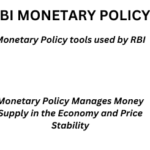Air pollution in India:

Delhi’s air-quality levels deteriorated this week. According to the World Air Quality Report prepared by IQAir, Delhi ranked fourth on a list of 50 of the world’s most polluted cities in terms of PM2.5 levels in 2022.
India’s National Clean Air Program (NCAP) was launched in 2019 and the NCAP set a target of reducing ultra-fine particulate matter levels in non-attainment cities by 20-30 per cent by 2022. This target was moved forward by the Union government in September 2022, to a 40 percent reduction of pollution levels by 2026.
However, even in 2022, pollution levels in non-attainment cities remained much higher than the Central Pollution Control Board’s (CPCB) annual average safe limits.
The National Ambient Air Quality Monitoring Programme was launched in 1984 and the revised National Ambient Air Quality Standards was notified in 2009. Under NAMP, three air pollutants viz: SO2(Sulphur Dioxide), NO2(Nitrogen Dioxide) & PM10 are monitored.
Fine particulate matter (PM2.5) is an air pollutant that is a concern for people’s health when levels in the air are high. The term fine particles, or particulate matter 2.5 (PM2.5), refers to tiny particles or droplets in the air that are two and one-half microns or less in width. Like inches, meters, and miles, a micron is a unit of measurement for distance. There are about 25,000 microns in an inch.
Particles in the PM2.5 size range are able to travel deeply into the respiratory tract, reaching the lungs. Exposure to fine particles can cause short-term health effects such as eye, nose, throat, and lung irritation, coughing, sneezing, runny nose, and shortness of breath.
There are outdoor and indoor sources of fine particles. Outside, fine particles primarily come from car, truck, bus, and off-road vehicle (e.g., construction equipment, snowmobile, locomotive) exhausts, other operations that involve the burning of fuels such as wood, heating oil or coal, and natural sources such as forest and grass fires. Fine particles also form from the reaction of gases or droplets in the atmosphere from sources such as power plants. These chemical reactions can occur miles from the original source of the emissions. Because fine particles can be carried long distances from their source, events such as wildfires or volcanic eruptions can raise fine particle concentrations hundreds of miles from the event.
PM2.5 is also produced by common indoor activities. Some indoor sources of fine particles are tobacco smoke, cooking (e.g., frying, sautéing, and broiling), burning candles or oil lamps, and operating fireplaces and fuel-burning space heaters (e.g., kerosene heaters)
INDIA’S STANDARD FOR LEVEL OF POLLUTION
India has set standards for what it thinks are appropriate warnings for a particular level of pollutant. AQI helps in comparing pollution levels at a glance with a color code and a numerical value. In India, AQIs are determined based on the concentrations of seven pollutants, including PM2.5 (fine, respirable particles), sulfur dioxide (SO2), nitrogen dioxide (NO2), and carbon monoxide (CO).There are six AQI categories, namely: Good, Satisfactory, Moderately polluted, Poor, Very poor and Severe.
India has also introduction of BS-VI emission standards.







0 Comments